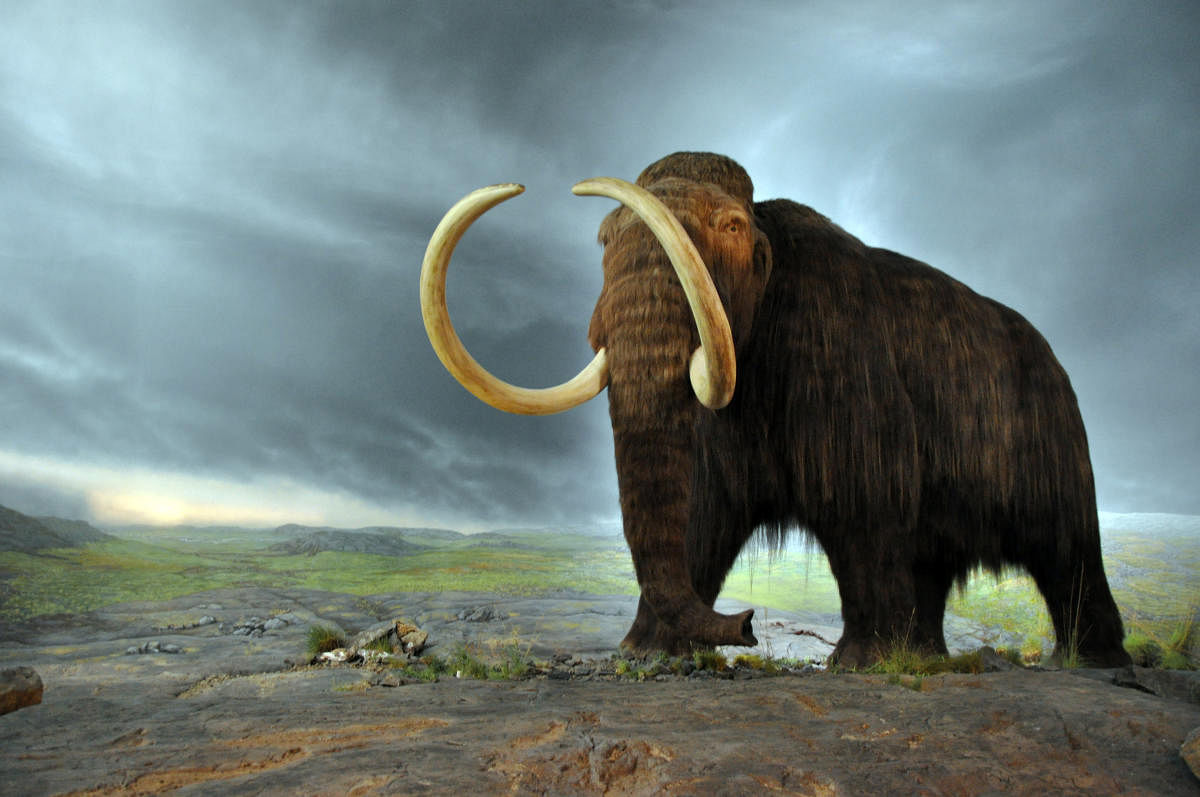
The last woolly mammoths lived on Wrangel Island in the Arctic Ocean, and died out about 4,000 years ago owing to a combination of isolated habitat, extreme weather events and spread of prehistoric humans, according to a study unveiled on Monday.
An international team, including researchers from the University of Helsinki in Finland, has reconstructed the scenario that could have led to the extinction of the ancient giants.
During the last ice age some 100,000 to 15,000 years ago, mammoths were widespread in the northern hemisphere from Spain to Alaska.
Due to the global warming that began 15,000 years ago, their habitat in Northern Siberia and Alaska shrank, they said.
On Wrangel Island, some mammoths were cut off from the mainland by rising sea levels; that population survived another 7,000 years, according to the study published in the journal Quaternary Science Reviews.
The team, including researchers from Tubingen University in Germany and the Russian Academy of Sciences, examined the isotope compositions of carbon, nitrogen, sulphur and strontium from a large set of mammoth bones and teeth from Northern Siberia, Alaska, the Yukon, and Wrangel Island, ranging from 40,000 to 4,000 years in age.
The results showed that Wrangel Island mammoths' collagen carbon and nitrogen isotope compositions did not shift as the climate warmed up some 10,000 years ago.
The values remained unchanged until the mammoths disappeared, seemingly from the midst of stable, favourable living conditions.
This result contrasts with the findings on woolly mammoths from the Ukrainian-Russian plains, which died out 15,000 years ago, and on the mammoths of St. Paul Island in Alaska, who disappeared 5,600 years ago, researchers said.
In both cases, the last representatives of these populations showed significant changes in their isotopic composition, indicating changes in their environment shortly before they became locally extinct, according to the researchers.
Earlier DNA studies indicate that the Wrangel Island mammoths suffered mutations affecting their fat metabolism, they said.
In the new study, the team found an intriguing difference between the Wrangel Island mammoths and their ice age Siberian predecessors.
The carbonate carbon isotope values indicated a difference in the fats and carbohydrates in the populations' diets, the researchers said.
"We think this reflects the tendency of Siberian mammoths to rely on their reserves of fat to survive through the extremely harsh ice age winters, while Wrangel mammoths, living in milder conditions, simply didn't need to," said Laura Arppe from the University of Helsinki, who led the team.
The bones also contained levels of sulphur and strontium that suggested the weathering of bedrock intensified towards the end of the mammoth population's existence.
This may have affected the quality of the mammoths' drinking water, the researchers said.
They suspect that the last woolly mammoths died out due to short-term events.
Extreme weather such as a rain-on-snow, i.e. an icing event could have covered the ground in a thick layer of ice, preventing the animals from finding enough food.
That could have led to a dramatic population decline and eventually to extinction, the researchers said.
"It's easy to imagine that the population, perhaps already weakened by genetic deterioration and drinking water quality issues could have succumbed after something like an extreme weather event," said professor Herve Bocherens from the University of Tubingen, a co-author of the study.
Another possible factor, according to the study, could have been the spread of humans.
The earliest archaeological evidence of humans on Wrangel Island dates to just a few hundred years after the most recent mammoth bone.
The chance of finding evidence that humans hunted Wrangel Island mammoths is very small. Yet a human contribution to the extinction cannot be ruled out, the researchers said.